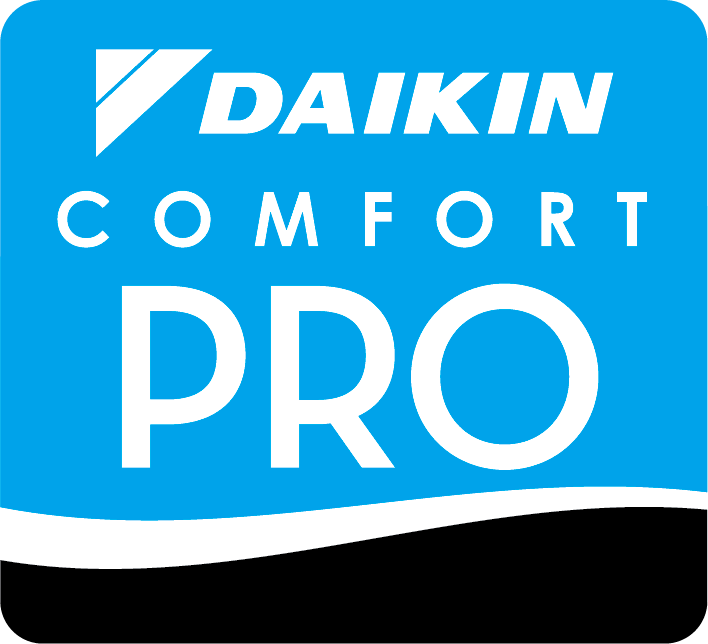Questions We’re Frequently Asked
About System Operations…
Q: How do heat pumps and central air conditioners work?
A: Heat pumps and central air conditioners are “split systems,” which means that there is an outdoor unit (condenser) and an indoor unit (coil). The job of the heat pump/air conditioner is to transport heat from one unit to the other. Your system uses refrigerant as the means of transport.
In air conditioning operation, the compressor in your outdoor unit will change the gaseous refrigerant into a high temperature, high pressure gas. As that gas flows through the outdoor coil, it will lose heat and condense into a high temperature, high pressure liquid. The liquid refrigerant travels through copper tubing into the evaporator coil located in your fan coil unit or attached to your furnace. The liquid refrigerant is then allowed to expand, and this expansion turns the refrigerant into a low temperature, low pressure gas. The gas then absorbs heat from the air circulating in the duct work, leaving it full of cooler air to be distributed throughout your house. Meanwhile, the low temperature, low pressure refrigerant gas returns to the compressor to begin the cycle all over again.
A heat pump’s exchanger squeezes heat out of cold air (even from very cold air, such as -200F), then transfers that heat into your home with the help of a fan coil or a furnace, which then circulates warm air through your ducts. Heat pumps are often installed with back-up electric resistance heat or a furnace to handle those times when more heat is needed than the heat pump can efficiently extract from the air.
Q: How do furnaces work?
A: Furnaces heat and circulate warm air in the winter. Heat is created by burning the fuel inside your furnace. When the fuel burns, the hot gases that are created go through curved metal tubing called a heat exchanger and then out of your home through a metal or plastic vent pipe. At the same time, the air that circulates through your ducts passes over the outside of the heat exchanger and takes on the heat from the hot metal. The warm air is then circulated through your home.
Q: How is furnace efficiency rated?
A. Furnace heating ability is measured with an Annual Fuel Utilization Efficiency (AFUE) percentage. A higher AFUE percentage indicates a more efficient furnace, and if the ratio of the amount of heat you get for every dollar of gas you buy. For example: an 80% furnace gives you 80 cents of heat for every dollar of gas you buy, and a 95% furnace will give you 95 cents worth for every dollar.
Q: How do thermostats work?
A: Thermostats are the control system for your heating and air conditioning equipment. This device gives you the information on what the equipment is doing, when it needs to be serviced and allows you to set the exact temperature and humidity you want to maintain in your home. Electronic thermostats have an internal microprocessor that compares the room’s temperature to the temperature you select. Then it gives start and stop commands to the heating or cooling system to bring the temperature to your chosen level. Programmable thermostats work in basically the same way, but are much more convenient, allowing you to program the desired temperature, even for specific times of day, to stay comfortable and save energy all season.
Q: How do air cleaners work?
A: Air cleaners remove up to 95% of dust, pollen, fungi, smoke and other small particles from your home’s air. And since these pollutants can build up as film on walls and furniture, this is performance you’ll feel and see. An aluminum mesh filter catches most of the large particles. The smaller particles pass through an ionizing section, where they receive an electrical charge, making them adhere to grounded metal plates inside the unit. The plates are then washed every few months to remove the particles. Electronic air cleaners are more effective than your furnace or air conditioner alone, and are very inexpensive to use.
Q: How do humidifiers work?
A: Controlling indoor humidity not only makes your home more comfortable, it saves you money on your monthly energy bills. Air heated by your furnace or heat pump passes through a ceramic-coated pad in your humidifier. The air absorbs moisture from the water-soaked pad and becomes water vapor that humidifies the air that is circulated throughout your home. Most humidifiers feature an adjustable humidistat so you can control the exact amount of moisture in the air.
Additional FAQs
About Us…
About Replacing or Installing a System…
About System Health and Maintenance…
About System Operations…
About Our Service Plans…
About Scheduled or Emergency Calls…


